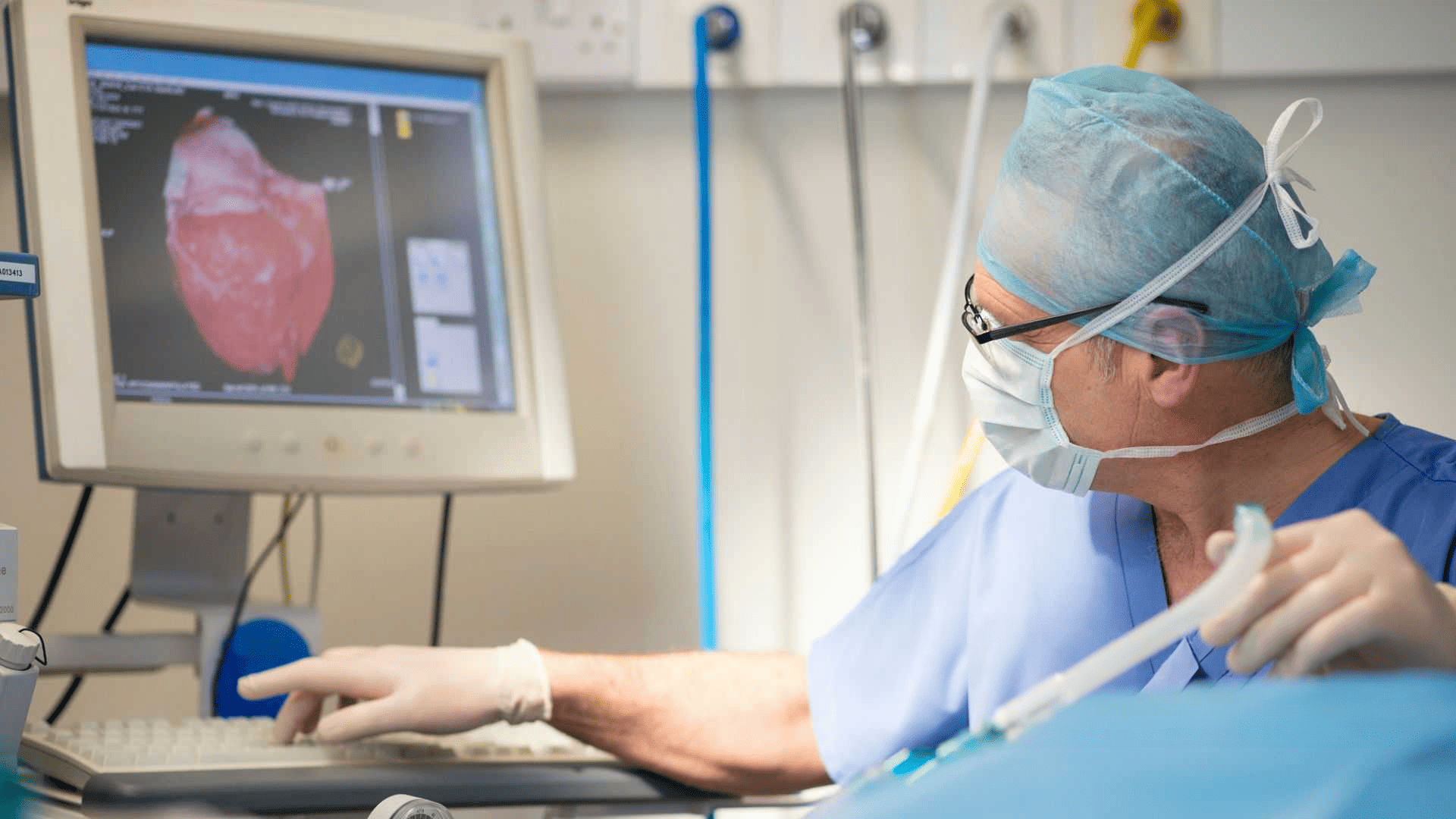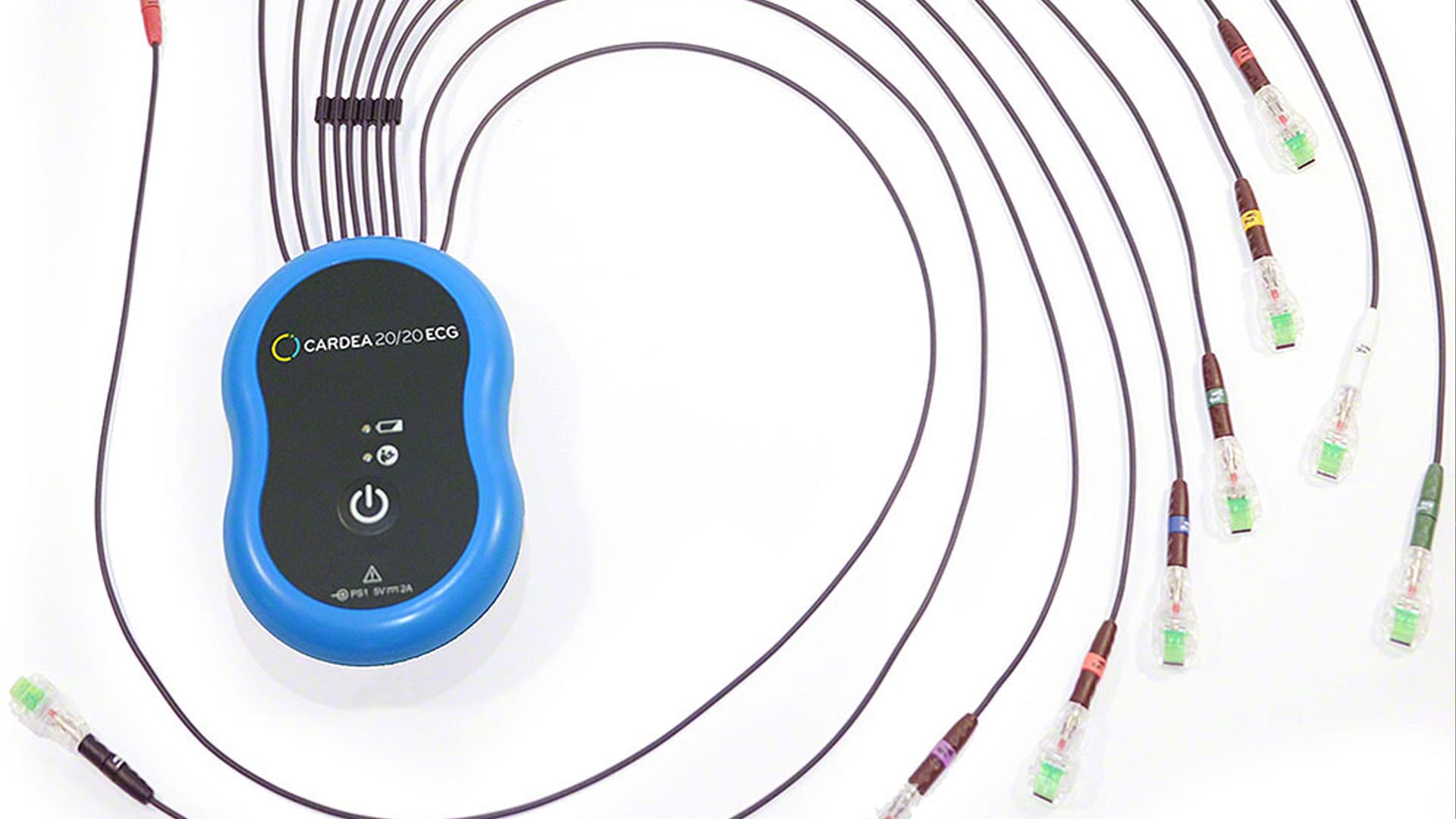As the healthcare industry continues to innovate patient care, cardiology providers are paying close attention to how these new technologies can improve their practices. Cardiac care may benefit the most from recent developments, given the growing prevalence of heart conditions and the associated diagnostic challenges. Among the several emerging technologies in the cardiac space, four of the most impactful innovations include:
1. Artificial Intelligence for Difficult-to-Diagnose Heart Conditions
A recent breakthrough study from the Cedars-Sinai Smidt Heart Institute demonstrated the ability of machine learning models to identify and distinguish between hypertrophic cardiomyopathy and cardiac amyloidosis.1 The technology examined left ventricular wall thickness on ultrasound videos to differentiate between the two conditions — a challenge even for the most experienced cardiology experts.
Due to the different courses of treatment, accurately diagnosing these conditions allows treatment initiation earlier. The hope is that artificial intelligence disease screening will offer a more efficient method to diagnose subtle conditions that appear visually similar for improved cardiology outcomes. In furtherance of precision medicine, the researchers now have a clinical trial studying the usefulness of AI guided echocardiographic screening.
2. Stretchable Ultrasound Patch Detecting Hemodynamic Variability
Wearable devices may be making headway in the cardiology community, but directly monitoring activity in the heart and larger blood vessels remains a considerable challenge for standard prescription wearable technology. A new solution takes the form of a stretchable patch, equipped with ultrasonic phased array technology that directs sound waves to specific locations of interest.2
The skin-conforming patch continuously monitors hemodynamic signals up to 14 cm below the surface, with minimal signal interference during movement-related device displacement.3 The deep-tissue monitoring capabilities accurately track heart beats, red blood cell movement, and blood pressure fidelity waveforms in real-time.4
3. Personalized Heart Modeling
As the cardiology space pivots toward Precision Cardiology, computational heart modeling emerges as a beneficial tool to guide treatment plans. These models are constructed with data from magnetic resonance imaging (MRI) scans, computed tomography (CT) imaging, electrocardiography readings, and other physiological and physical parameters.5
This in silico technology broadens the horizon for accelerated diagnostics, more accurate clinical predictions, and predictive modeling for experimental treatments. One study using personalized heart modeling to forecast ventricular arrhythmias in hypertrophic cardiomyopathy patients found an 84.6% sensitivity, 76.9% specificity, and 80.1% predictive accuracy — results that far surpass current clinical risk prediction models.6
4. Long-term Ambulatory ECG Monitoring
For decades, the short-term Holter monitor was the device of choice for detecting cardiac arrhythmias. Now, long-term electrocardiogram (ECG) monitoring is well-understood to improve diagnostic accuracy due to the intermittent nature of arrhythmias. A recent study found that 7-day monitoring generated a significantly higher diagnostic yield than 24-hour monitoring for six cardiac arrhythmias, noticeably increasing detection frequency of SVR by 37%.7
The Cardea SOLO™ ECG System from Cardiac Insight takes long-term ECG monitoring to the next level with a patient-friendly-chest sensor and rapid in-office analysis software delivering 100% data disclosure. Cardea SOLO provides an accurate arrhythmia diagnosis in seven days or less, helping providers start patients on the appropriate treatment as soon as possible for the best long-term outcomes.
Sources:
1. Duffy G, Cheng PP, Yuan N, et al. High-Throughput Precision Phenotyping of Left Ventricular Hypertrophy With Cardiovascular Deep Learning. JAMA Cardiol. 2022;7(4):386–395. doi:10.1001/jamacardio.2021.6059
2. Zhou, S. (2021, July 20). Stretchable ultrasonic patch for cardiovascular health monitoring in deep tissue. Nature Portfolio Bioengineering Community. https://bioengineeringcommunity.nature.com/posts/stretchable-ultrasonic-patch-for-cardiovascular-health-monitoring-in-deep-tissue
3. ibid
4. ibid
5. Sung E, Etoz S, Zhang Y, Trayanova NA. Whole-heart ventricular arrhythmia modeling moving forward: Mechanistic insights and translational applications. Biophys Rev (Melville). 2021 Sep;2(3):031304. doi: 10.1063/5.0058050. Epub 2021 Sep 28. PMID: 36281224; PMCID: PMC9588428.
6. O’Hara RP, Binka E, Prakosa A, Zimmerman SL, Cartoski MJ, Abraham MR, Lu DY, Boyle PM, Trayanova NA. Personalized computational heart models with T1-mapped fibrotic remodeling predict sudden death risk in patients with hypertrophic cardiomyopathy. Elife. 2022 Jan 25;11:e73325. doi: 10.7554/eLife.73325. PMID: 35076018; PMCID: PMC8789259.
7. Carrarini C, Di Stefano V, Russo M, Dono F, Di Pietro M, Furia N, Onofrj M, Bonanni L, Faustino M, De Angelis MV. ECG monitoring of post-stroke occurring arrhythmias: an observational study using 7-day Holter ECG. Sci Rep. 2022 Jan 7;12(1):228. doi: 10.1038/s41598-021-04285-6. PMID: 34997171; PMCID: PMC8741921.




